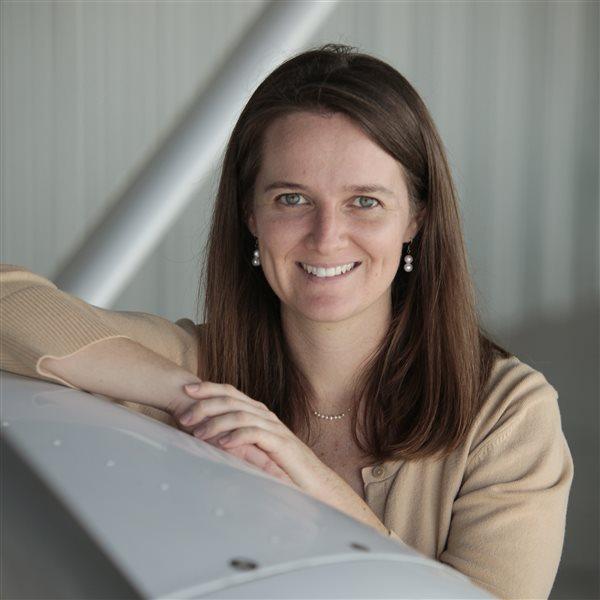'Project of passion'
Champaign Lady restoration gains momentum
After a flight in the Boeing B–17 Flying Fortress Liberty Belle in 2005, businessman and private pilot Jerry Shiffer purchased the remains of four B–17s with a vision to bring youths together near Dayton, Ohio, to restore the heavy bomber to airworthiness.

The day the first parts arrived at Grimes Field (I74) later that year, Shiffer was killed in an aircraft accident in Montana. His family remained committed to his vision, creating the nonprofit Champaign Aviation Museum for the aircraft’s restoration. His three children, Dave, Eric, and Andrea, are involved to varying degrees, Dave serving as the museum’s executive director and director of flight operations.
About 500 volunteers have invested more than 370,000 hours restoring the four-engine heavy bomber, disassembling and inspecting every piece to see if it could be reused, and repairing or fabricating new parts.
Demetri Capetanopoulos, president of the museum’s board of directors, dubbed the restoration a “project of passion.” Because of corrosion and other damage, about 75 percent of the airplane has had to be built new from the 40,000 blueprints Shiffer’s family acquired.
The aircraft, Champaign Lady, will carry the serial number from a B–17 that had served as an engine testbed and fire bomber, using the “inboard sections of each wing and the center truss within the fuselage,” according to the museum. Major sections from other B–17s include the rear fuselage from an airplane used as a nonflying prop for the television series 12 O’Clock High, forward fuselage from a bomber eventually used for search and rescue and later as a nuclear test subject, and the vertical stabilizer from a B–17 that was modified at the end of World War II to be a drone.

Champaign Aviation Museum Chief of Maintenance Randy Kemp starts each volunteer with a sheet metal project to learn the basics and then personally mentors them. “The great thing about this place is the teachers,” said Carole Buchwalter as she showed off the aluminum repair she did on the radio room fairing in the forward fuselage. The former air-conditioning mechanic has been volunteering with her husband, Robert, since 2008. You “couldn’t ask for a better group of people,” Robert Buchwalter said as he worked on sheet metal for the elevator with his 13-year-old grandson Braylon Secrest.
Jack Bailey, who was a best friend with Shiffer, has been involved since the beginning. He and other volunteers who have experience as tool-and-die machinists build tooling needed to manufacture or repair parts that are no longer available, allowing them to make what they need for their project and help other Flying Fortress restoration efforts.
“They’re part of it,” Bailey said of the volunteers. Each has the sense that “it’s ours.”
The restoration is gaining momentum, Bailey said: What took six years to complete on the right inboard wing has taken just two-and-a-half years on the left. The aircraft is almost structurally complete, except for the inner wing segments. Duplicates of the control surfaces are almost finished, and the engines have been overhauled. However, much of the systems work remains. The museum recently completed a $2 million hangar project to expand its aircraft display and educational programming for youth, allowing the current hangar to be cleared for Champaign Lady’s wings to be mounted.
The restoration has been “nothing short of magical, miraculous,” said Jessica Henry, the museum’s development director. When the group was searching for an upper turret, a woman donated one. Another time, the same day their welder broke, a repairman walked in the hangar.
“Even though he’s never seen it, we say he helps us out,” volunteer Eric Lewis said of Shiffer. “He’s looking out for us.” 



